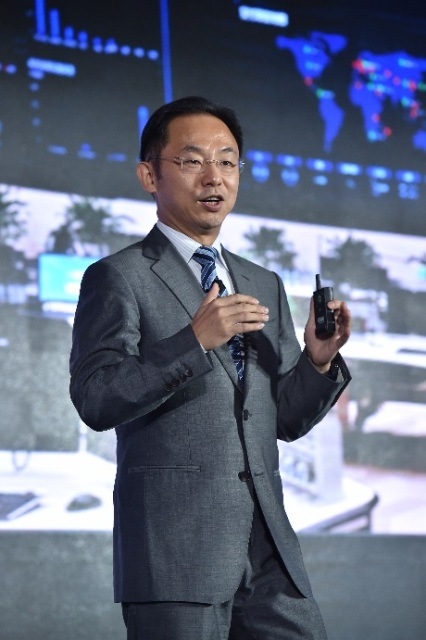Huawei’s 9th Annual User Group Meeting Show’s Company Focus on Listening, Collaborating and Improving
[Xi'an, China, July 3, 2017] At the 9th Huawei User Group Meeting in Xi'an, Ryan Ding, Huawei's Executive Director of the Board and President of Carrier Business Group, delivered a keynote speech on "Listening, Collaborating and Improving". He expressed Huawei's determination to build customer service and measures for continuous customer-centric improvement, focusing on issues such as customer problems, operational efficiency, and helping customers increase revenues.
After nearly 30 years of development, Huawei is operating in more than 170 countries and regions. According to Ding, more innovative and agile service models are needed to meet the challenges of increasing service volumes and more diversified customer demands. He also shared his view on optimizing capital expenditure (CAPEX) and operating expense (OPEX) and introduced Huawei's Global Technical Support Center (GTSC) and how it uses digital technologies to provide quality services.

Ryan Ding, Huawei's Executive Director of the Board and President of Carrier Business Group, delivered a keynote speech on "Listening, Collaborating and Improving"
"Our customer's voice is the driving force behind Huawei's continuous improvement,” said Ding. “Our target is to help customers solve problems, improve operational efficiency, increase revenue, and achieve business success," he said.
Addressing operators' concern about CAPEX, Ding noted that "demand for traffic is still growing rapidly and CAPEX efficiency should be improved. He believes operators should focus on optimizing their CAPEX investment structure to obtain better return on investment. For example, many operators in Asia-Pacific benefit from positive 4G investments. He explained that regional CAPEX investment structure is more reasonable in Asia-Pacific.
Ding shared two case studies on facility investment efficiency enhancement. In Brazil, Huawei helped customers restructure their traditional tower into a new type of pole tower. The overall cost was reduced and the construction period was significantly shortened. In some European countries, the payback period of fiber to the home (FTTH) investment in villa properties was an average of 17 years. Thus, large-scale national broadband deployment is difficult in these countries. In response, Huawei worked with customers to roll out various innovative solutions, reducing the FTTH cost.
Globally, the average OPEX is four times that of CAPEX. After in-depth analysis of operators' OPEX components, Ding provided four major OPEX optimization directions: Network Modernization, O&M Automation, Customer Service “Intelligentization” and Marketing Digitization. He illustrated how Huawei GTSC uses digital technologies to change its delivery model to achieve centralized, real-time, and intelligent data management, and to achieve rapid global collaboration and deployment of resources. Through these measures, Huawei's GTSC can more efficiently provide customers worldwide with high-quality and agile services.
There recent meeting was Huawei’s 9th annual such customer get-together and over 2,000 customers have attended these meetings to share insights and practices. The meetings provide a forum for customers to put forward valuable opinions and suggestions on Huawei's products, solutions, and services, to help Huawei constantly improve. In the past nine years, 11 HUGM Board members and over 350 volunteer customers have worked with Huawei in more than 40 Top Improvement Projects, helping Huawei improve product and service quality, as well as helping Huawei customers on the road to value-driven sustainable growth.

